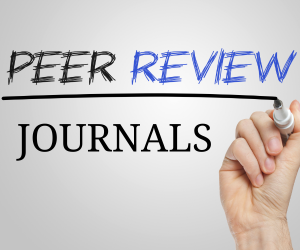THE EFFECTS OF LUMBAR TRACTION IN LUMBAR DISCAL HERNIA. A SINGLE CASE STUDY
DOI:
https://doi.org/10.53555/nnmhs.v6i10.914Keywords:
Traction, Physiotherapy, Pain, Quality of LifeAbstract
People have always had back pain. Back pain was described in the distant past in old texts from 1500 BC. The word sciatica has been used since Ancient Greek times and Hippocrates (460-370 BC) described “sciatic”pain as mainly affecting men aged 40-60 years (Allan and Waddell, 1989).
References
Adams, M. A. and Roughley, P. J. (2006). What is intervertebral disc degeneration, and what causes it? Spine, 31(18):2151–61
Allan, D. B. and Waddell, G. (1989). An historical perspective on low back pain and disability. ActaOrthopaedicaScandinavica. Supplementum, 234:1–23.
Bono, C. M., Wisneski, R., and Garfin, S. R. (2006). Lumbar Disc Herniations. In Herkowitz, H. N., Garfin, S. R., Eismont, F. J., Bell, G. R., and Balderston, R. A., editors, RothmanSimeone The Spine, volume II, chapter 59, pages 979–80. Saunders, Philadelphia, 5th edition.
Björck-van Dijken, C., Fjellman-Wiklund, A., and Hildingsson, C. (2008). Low back pain, lifestyle factors and physical activity: a population based-study. Journal of Rehabilitation Medicine, 40(10):864–9.
Brisby, H., Byröd, G., Olmarker, K., Miller, V.M., Aoki, Y., and Rydevik, B. (2000). Nitric oxide as a mediator of nucleus pulposus-induced effects on spinal nerve roots. Journal of Orthopaedic Research, 18(5):815–20.
Cyriax I: Textbook of Orthopedic Medicine, Volume I: Diagnosis of Soft Tissue Lesions, London: Bailliere Tindall, 1982
Chan, S. C., Ferguson, S. J., and Gantenbein-Ritter, B. (2011). The effects of dynamic loading on the intervertebral disc. European Spine Journal, 20(11):1796–812.
Cailliet R: Low Back Pain Syndrome, Philadelphia: F.A. Davis Company, 1988
Coldish CD: Lumbar traction. In: Tollison CD, Kriegel ML (eds), Interdisciplinary Rehabilitation of Low Back Pain, pp 305-32 1. Baltimore: Williams &Wilkins, 1989
Estlander, A. M., Vanharanta, H., Moneta, G. B., and Kaivanto, K. (1994). Anthropometric variables, self-efficacy beliefs, and pain and disability ratings on the isokinetic performance of low back pain patients. Spine, 19(8):941–7. [11] Fardon, D. F. and Milette, P. C. (2001). Nomenclature and classification of lumbar disc pathology. Recommendations of the Combined Task Forces of the North American Spine Society, American Society of Spine Radiology, and American Society of Neuroradiology. Spine, 26(5):E93–E113.
Gupta RC, Ramarao MS: Epidurography in reduction of lumbar disc prolapse by traction. Arch Phys Med Rehabil59: 322-327, 1978
Mixter, W. J. and Barr, J. S. (1934). Rupture of the intervertebral disc with involvement of the spine canal. New England Surgical Society, 211(5):210–5.
Rydevik, B., Brown, M. D., and Lundborg, G. (1984). Pathoanatomy and pathophysiology of nerve root compression. Spine, 9(1):7–15.
Saunders HD, Saunders R: Evaluation, Treatment and Prevention of Musculoskeletal Disorders, Bloomington, MN: Educational Opportunities, 1993
Twomey LT: Sustained lumbar traction:An experimental study of long spine segments. Spine 10: 146- 149,1985
Colachis SC, Strohm BR: Effects of intermittent traction on separation of lumbar vertebrae. Arch Phys Med Rehabil50: 25 1-258, 1969
Mathews A: Dynamic discography: A study of lumbar traction. Ann Phys Med 9:275-279, 1968
Handa, T., Ishihara, H., Ohshima, H., Osada, R., Tsuji, H., and Obata, K. (1997).Effects of hydrostatic pressure on matrix synthesis and matrix metalloproteinaseproduction in the human lumbar intervertebral disc. Spine, 22(10):1085–91.
Hoy, D., Bain, C., Williams, G., March, L., Brooks, P., Blyth, F., Woolf, A., Vos, T., and Buchbinder, R. (2012). A systematic review of the global prevalence of low back pain. Arthritis and Rheumatism, 64(6):2028–37.
Kayama, S., Konno, S., Olmarker, K., Yabuki, S., and Kikuchi, S. (1996). Incisionof the anulus fibrosus induces nerve root morphologic, vascular, and functionalchanges. An experimental study. Spine, 21(22):2539–43.
Olmarker, K., Nordborg, C., Larsson, K., and Rydevik, B. (1996). Ultrastructuralchanges in spinal nerve roots induced by autologous nucleus pulposus. Spine,21(4):411–4.
Olmarker, K., Rydevik, B., and Nordborg, C. (1993). Autologous nucleus pulposusinduces neurophysiologic and histologic changes in porcine cauda equina nerveroots. Spine, 18(11):1425–32.
Vlaeyen, J., Kole-Snijders, A., Rotteveel, A., Ruesink, R., and Heuts, P. (1995a). The role of fear of movement/ (re)injury in pain disability. Journal of Occupational Rehabilitation, 5(4):235–51.
Vroomen, P. C., de Krom, M. C., Wilmink, J. T., Kester, A. D., and Knottnerus, J. A. (2002). Diagnostic value of history and physical examination in patients suspected of lumbosacral nerve root compression. Journal of Neurology, Neurosurgery and Psychiatry, 72(5):630–4.
Weber, H., Holme, I., and Amlie, E. (1993). The natural course of acute sciatica with nerve root symptoms in a double-blind placebo-controlled trial evaluating the effect of piroxicam. Spine, 18(11):1433–8.
Worden RE, Humphrey TL: Effect of spinal traction on the length of the body. Arch Phys Med Rehabil45:3 18-320, 1964
White, A. A. and Panjabi, M. M. (1978). Clinical Biomechanics of the Spine. J. B. Lippincott Company, Philadelphia, Pa.
1University of Sports of Tirana, Albania
Downloads
Published
Issue
Section
License

This work is licensed under a Creative Commons Attribution 4.0 International License.
Licensing
Ninety Nine Publication publishes articles under the Creative Commons Attribution 4.0 International License (CC BY 4.0). This licensing allows for any use of the work, provided the original author(s) and source are credited, thereby facilitating the free exchange and use of research for the advancement of knowledge.
Detailed Licensing Terms
Attribution (BY): Users must give appropriate credit, provide a link to the license, and indicate if changes were made. Users may do so in any reasonable manner, but not in any way that suggests the licensor endorses them or their use.
No Additional Restrictions: Users may not apply legal terms or technological measures that legally restrict others from doing anything the license permits.





